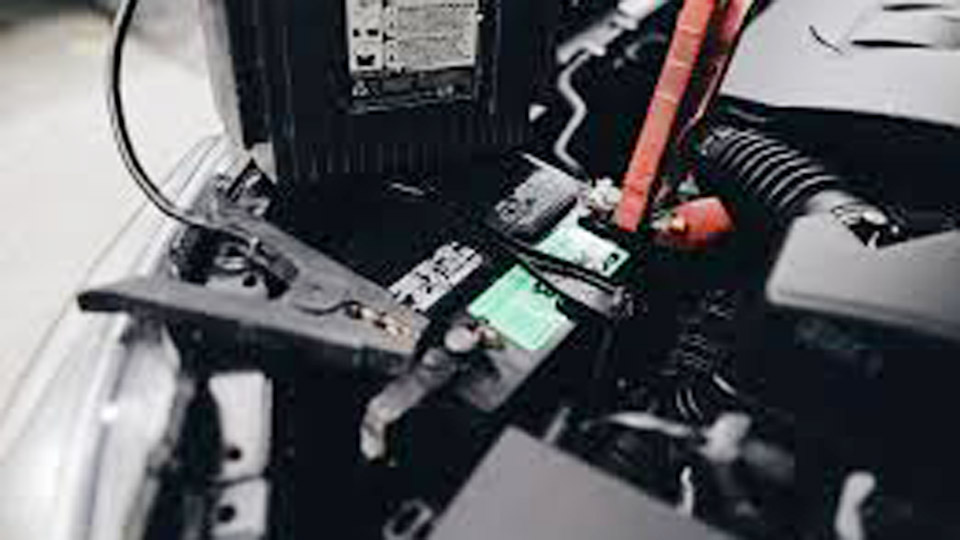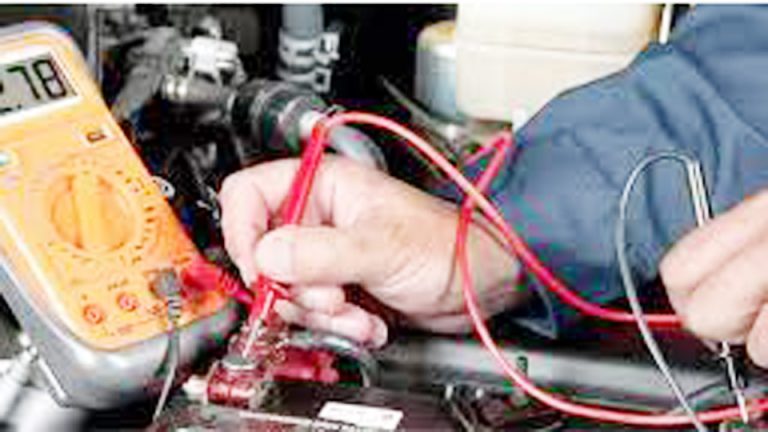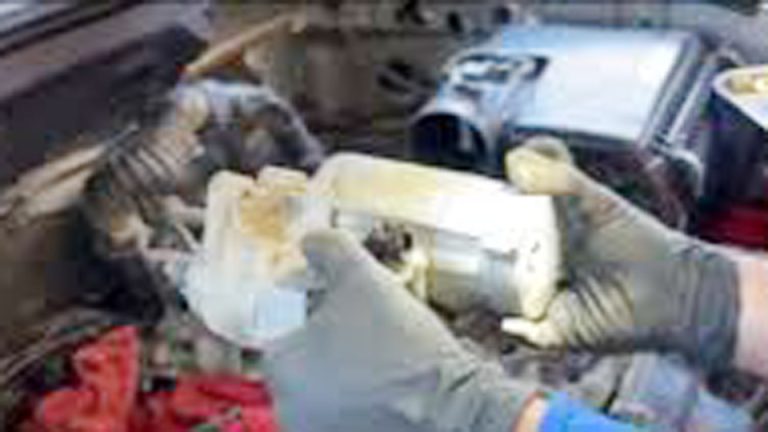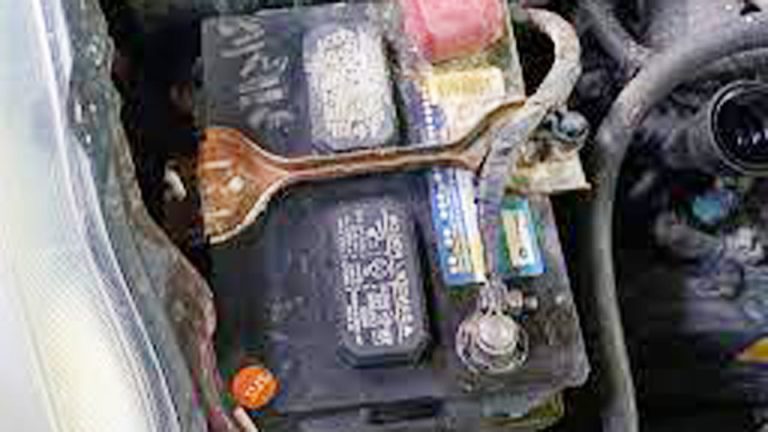I’ll never forget the morning I was running late for work, jumped into my car, turned the key—and got nothing but a click. My first instinct? Grab the jumper cables. But after getting a jump from a neighbor, the car still wouldn’t start. That’s when it hit me: this wasn’t a dead battery. It was a starter motor issue.
Having dealt with a faulty starter firsthand, I quickly learned that jump-starting only works if the battery is the problem—not when the part that cranks the engine is failing. In some cases, a jump can help a weak starter get just enough juice to turn over—at least temporarily.
I’ll share what I’ve learned from real-world experience about jump-starting a car with a bad starter, when it might work, and what tricks (like tapping the starter or bypassing the relay) can sometimes get you going when you’re in a pinch.

Image by revolutionmotors
What Does the Starter Motor Do?
Before we get into jump-starting, let’s break down what the starter motor does. Picture it as the spark that wakes up your car’s engine. It’s a small electric motor that uses battery power to spin the crankshaft, which gets the pistons moving and starts the combustion process.
When you turn the key, a solenoid (a magnetic switch) pushes a gear into the engine’s flywheel, and the motor cranks the engine to life. Once the engine’s running, the starter disengages, and you’re good to go.
When the starter’s faulty, it might not crank the engine at all. I remember when my old Honda Civic’s starter started acting up—it’d click but wouldn’t turn the engine. I tried a jump start, hoping for a quick fix, and learned a lot in the process. Let’s explore whether that’ll work for you.
Why Might a Starter Motor Be Faulty?
Starters are tough, but they’re not invincible. From my years of wrenching, here are the common reasons a starter motor fails:
- Weak Battery Connection: Corrosion or loose cables can starve the starter of power, making it seem faulty.
- Worn Brushes: The carbon brushes inside the motor wear out, breaking the electrical circuit.
- Faulty Solenoid: The solenoid might not engage the gear or send power to the motor.
- Stuck Pinion Gear: The gear that engages the flywheel can get stuck or worn, preventing cranking.
- Burnt Windings: Overheating or age can fry the motor’s internal wiring.
- Dirty Contacts: Grime on the starter’s electrical connections can block power flow.
One time, my neighbor’s Toyota Corolla wouldn’t start, and he thought the starter was shot. A quick check showed a corroded battery terminal was the real issue. A jump start got it going, but we had to clean the terminals to keep it reliable.
Can a Jump Start Help with a Faulty Starter?
So, can you jump start a car with a faulty starter motor? The answer hinges on why the starter’s not working. A jump start boosts your battery’s power, which can help if the starter’s struggling due to low voltage.
For example, if your battery’s weak (say, below 12 volts), the starter might not have enough juice to crank the engine, even if it’s technically functional. A jump start can provide the extra power needed to get it going.
If the starter’s mechanically broken—say, the brushes are shot, the solenoid’s dead, or the gears are stripped—no amount of extra battery power will help.
I learned this the hard way with my buddy’s Ford Focus. We tried jumping it, but the starter was toast, and we ended up tapping it to get it started (more on that later).
Here’s a quick breakdown of when a jump start might work:
| Starter Issue | Will Jump Start Help? | Why? |
|---|---|---|
| Weak battery | Yes | Extra power boosts the starter. |
| Corroded connections | Maybe | Jump start might bypass minor corrosion. |
| Worn brushes | Unlikely | Mechanical issue; needs repair. |
| Faulty solenoid | No | Solenoid failure blocks power flow. |
| Stuck pinion gear | No | Gear won’t engage, regardless of power. |
| Burnt windings | No | Motor’s internal damage prevents cranking. |
How to Jump Start a Car Safely
If you think a jump start might help, let’s do it right. I’ve jumped dozens of cars, from my own beater to friends’ fancy SUVs. Here’s my step-by-step guide:
- Find a Helper Car: Get a car with a good battery and park it close, but don’t let the cars touch.
- Grab Jumper Cables: Make sure they’re heavy-duty with clean clamps.
- Connect the Cables:
- Attach one red clamp to the positive (+) terminal of your dead battery.
- Attach the other red clamp to the positive terminal of the helper car’s battery.
- Attach one black clamp to the negative (–) terminal of the helper car’s battery.
- Attach the other black clamp to an unpainted metal surface on your car’s engine (like a bolt).
- Start the Helper Car: Let it run for 1–2 minutes to charge your battery.
- Try Starting Your Car: Turn the key. If it doesn’t crank, wait another minute and try again.
- Disconnect Carefully: Remove the cables in reverse order—black from your car, black from helper car, red from helper car, red from your car.
I jumped my sister’s Hyundai Elantra in a snowy parking lot once. The battery was low, and the jump got her going in minutes. But if the starter’s mechanically faulty, this won’t cut it.
Other Ways to Start a Car with a Faulty Starter
If a jump start doesn’t work, don’t lose hope. I’ve used a few other tricks to get a car running when the starter’s acting up. These are temporary fixes to get you to a mechanic or home.
Tap the Starter
This is a classic mechanic’s trick. If the starter’s brushes or solenoid are sticking, a gentle tap can free them up. Here’s how I do it:
- Locate the starter—usually a cylindrical metal piece near the bottom of the engine, bolted to the transmission.
- Use a screwdriver handle or wrench to give it 2–3 light taps (don’t go crazy).
- Have someone turn the key while you tap.
I saved a friend’s Chevy Malibu with this trick at a gas station. A few taps, and the engine roared to life. It’s not a permanent fix, but it can get you out of a pinch.
Push-Start a Manual Transmission Car
If your car has a manual transmission, you can bypass the starter entirely by push-starting. I’ve done this on my old VW Golf, and it’s a game-changer. Here’s the process:
- Find a flat or slightly downhill road for safety.
- Turn the ignition to the “on” position.
- Press the clutch and shift into second gear.
- Get a friend to push the car (or let it roll downhill) until it’s going 5–10 mph.
- Release the clutch quickly to engage the engine.
- Press the clutch again and give it some gas to keep it running.
This won’t work for automatics, and it’s not a fix—just a way to get moving. I push-started my Golf on a camping trip when the starter died, and it got me to a shop.
Check and Clean Connections
Sometimes, the starter’s fine, but dirty or loose connections are the problem. I’ve fixed many “faulty” starters this way. Here’s what to do:
- Disconnect the battery’s negative terminal for safety.
- Check the battery terminals for corrosion (white, crusty stuff).
- Scrub with a wire brush or sandpaper and baking soda paste.
- Check the starter’s wires (usually near the motor). Tighten or clean them.
- Reconnect and try starting.
I fixed a Dodge Ram’s no-start issue by cleaning a corroded starter cable. It took 20 minutes and cost me nothing but a little elbow grease.
Swap the Starter Relay
The starter relay sends power to the starter. If it’s bad, the starter won’t work. Find the relay in your fuse box (check your owner’s manual), swap it with an identical one (like the horn relay), and try starting. A new relay costs $10–$20. I swapped one on a Nissan Altima, and it was a quick fix.
When a Jump Start Won’t Work
If none of these tricks work, the starter might be too far gone. A burnt-out motor, dead solenoid, or stripped gears mean you’ll need to repair or replace the starter. I tried jumping and tapping my buddy’s old Jeep, but the starter was completely fried. We replaced it for $150, which was cheaper than a tow and shop labor.
Here’s a table to help you decide what to try:
| Symptom | Try Jump Start? | Other Fixes to Try | Likely Outcome |
|---|---|---|---|
| Single click | Maybe | Tap starter, clean connections | Temporary fix possible |
| Rapid clicking | Yes | Charge battery, clean terminals | Likely to work |
| No sound | No | Check relay, clean connections | Relay or wiring issue |
| Grinding noise | No | Tap starter, lubricate gear | May need replacement |
| Slow cranking | Yes | Jump start, clean connections | Battery or connection issue |
Safety First When Troubleshooting
Working on a car is rewarding, but you’ve got to stay safe. Here’s what I always keep in mind:
- Disconnect the Battery: Always remove the negative terminal before touching the starter or wires to avoid shocks.
- Use Jack Stands: If you’re under the car, never rely on a jack alone. Stands keep you safe.
- Push-Start Safely: Don’t try push-starting on a busy road or steep hill. I almost rolled into traffic once—lesson learned.
- Wear Protection: Gloves and safety glasses keep grease and debris out of your hands and eyes.
I skipped gloves once while cleaning a battery and got corrosion all over my hands. Trust me, it’s not worth the hassle.
Costs to Consider
These fixes are cheap compared to replacing a starter. Here’s what I’ve spent on similar jobs:
| Fix | Cost (Approx.) | Time Needed |
|---|---|---|
| Jump start | $0–$50 (cables) | 10 minutes |
| Tap starter | $0 | 5 minutes |
| Push-start (manual) | $0 | 5 minutes |
| Clean connections | $5–$10 (brush, cleaner) | 30 minutes |
| Replace relay | $10–$20 | 15 minutes |
A new starter, on the other hand, costs $75–$500, plus $100–$500 for labor at a shop. I saved $400 by cleaning connections on a friend’s F-150 instead of replacing the starter.
Practical Tips to Prevent Starter Issues
Want to avoid starter problems down the road? Here’s what I’ve learned from keeping cars running:
- Test Your Battery Regularly: A weak battery strains the starter. Check it every couple of years.
- Clean Terminals: Corrosion builds up fast. Scrub terminals during oil changes.
- Limit Short Trips: Constant starting wears the starter faster. Combine errands when possible.
- Listen for Clues: Clicking or slow cranking means trouble’s coming. Don’t ignore it.
- Park Smart: Starting on steep hills stresses the starter. Park on flat ground when you can.
I always tell my friends to treat their starter like a good friend—give it some care, and it’ll stick around longer.
Get Your Car Moving and Stay Confident
So, can you jump start a car with a faulty starter motor? Sometimes, yes—if the issue’s tied to a weak battery or minor electrical glitch. But if the starter’s mechanically broken, you’ll need tricks like tapping it or push-starting (for manuals) to get going. As someone who’s spent countless hours under the hood, I love helping folks solve these problems without a tow truck.
With a few tools, some patience, and these tips, you can often get your car running and avoid a big repair bill. Next time your car won’t start, don’t panic—try these fixes, stay safe, and hit the road with confidence!
Frequently Asked Questions
What if a jump start doesn’t work?
If jumping doesn’t help, the starter might have a mechanical issue, like worn brushes or a bad solenoid. Try tapping the starter or cleaning connections. If those fail, test the relay or consider a repair. I jumped my Civic once, but it needed a tap to finally start.
Can I jump start an automatic car with a bad starter?
You can try, but if the starter’s mechanically faulty, it won’t work. Jump-starting helps with low battery power, not broken starters. For automatics, focus on cleaning connections or tapping the starter. I learned this with a friend’s Accord—it needed a new starter in the end.
How do I know if it’s the starter or the battery?
Test the battery with a multimeter (should read 12.6 volts). If lights and radio work but the engine won’t crank, it’s likely the starter. Rapid clicking points to a weak battery. I once thought my starter was bad, but a quick charge fixed it.
Is it safe to drive after jumping a car with a faulty starter?
If it starts reliably after a jump, you can drive to a mechanic, but don’t rely on it long-term. A faulty starter can fail again, leaving you stranded. I drove my Malibu a few days after a jump, but got it fixed quickly.
How much does a new starter cost if I need one?
A new starter runs $75–$500, depending on your car. Labor adds $100–$500, so expect $400–$1,000 at a shop. I replaced a starter on a Focus for $150, but a luxury car might hit $800 or more.




